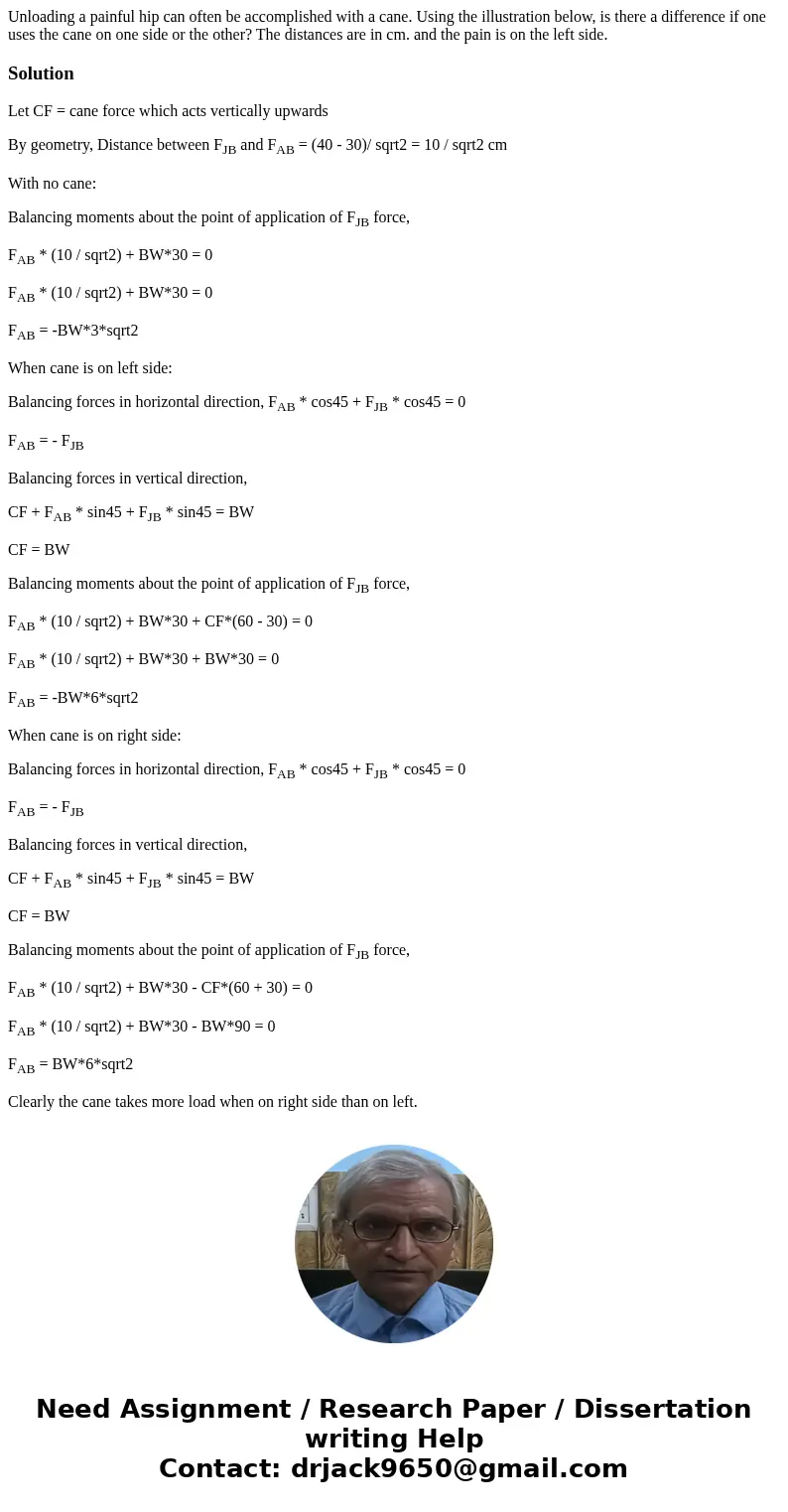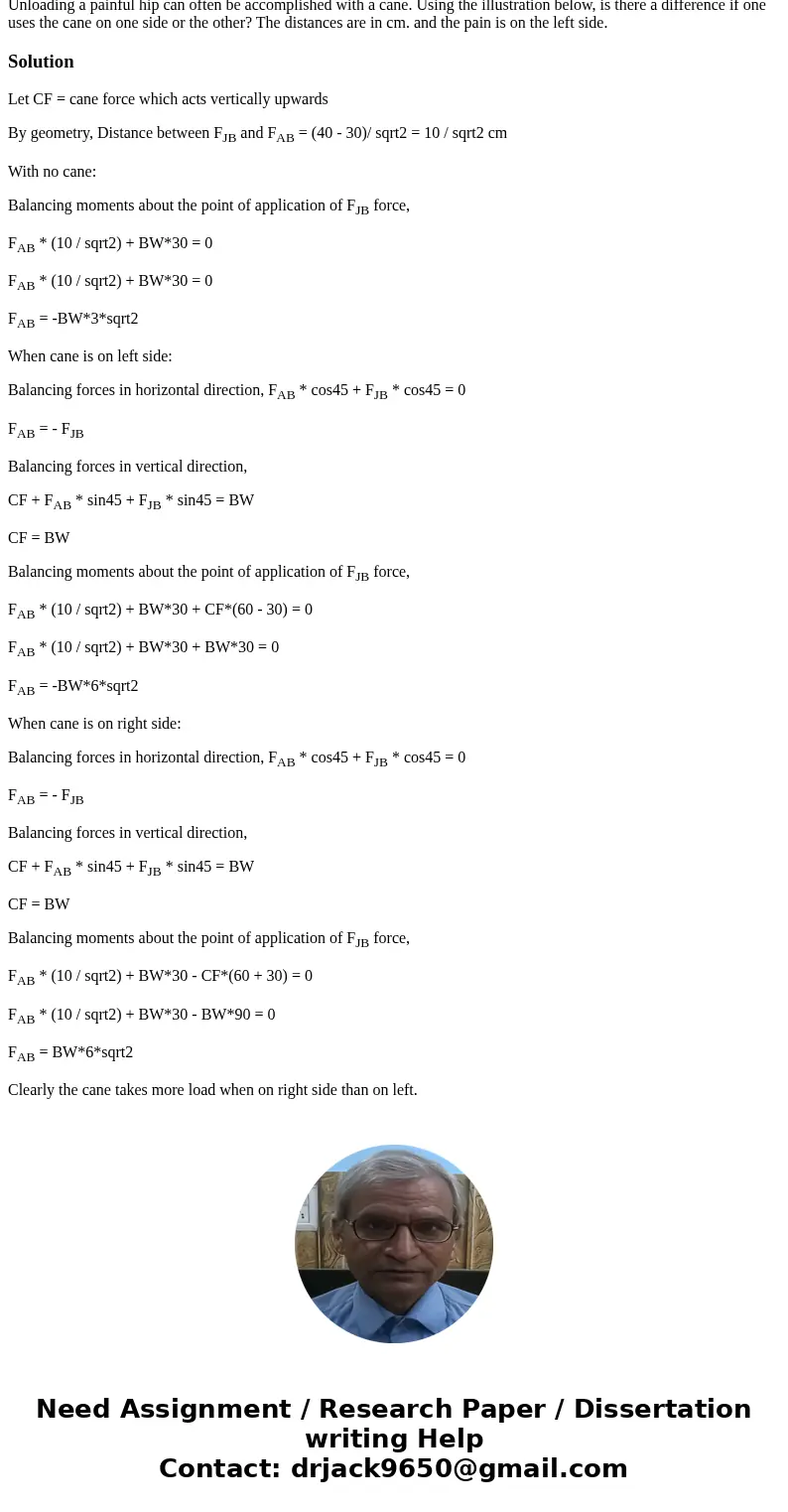Unloading a painful hip can often be accomplished with a can
Solution
Let CF = cane force which acts vertically upwards
By geometry, Distance between FJB and FAB = (40 - 30)/ sqrt2 = 10 / sqrt2 cm
With no cane:
Balancing moments about the point of application of FJB force,
FAB * (10 / sqrt2) + BW*30 = 0
FAB * (10 / sqrt2) + BW*30 = 0
FAB = -BW*3*sqrt2
When cane is on left side:
Balancing forces in horizontal direction, FAB * cos45 + FJB * cos45 = 0
FAB = - FJB
Balancing forces in vertical direction,
CF + FAB * sin45 + FJB * sin45 = BW
CF = BW
Balancing moments about the point of application of FJB force,
FAB * (10 / sqrt2) + BW*30 + CF*(60 - 30) = 0
FAB * (10 / sqrt2) + BW*30 + BW*30 = 0
FAB = -BW*6*sqrt2
When cane is on right side:
Balancing forces in horizontal direction, FAB * cos45 + FJB * cos45 = 0
FAB = - FJB
Balancing forces in vertical direction,
CF + FAB * sin45 + FJB * sin45 = BW
CF = BW
Balancing moments about the point of application of FJB force,
FAB * (10 / sqrt2) + BW*30 - CF*(60 + 30) = 0
FAB * (10 / sqrt2) + BW*30 - BW*90 = 0
FAB = BW*6*sqrt2
Clearly the cane takes more load when on right side than on left.


 Homework Sourse
Homework Sourse